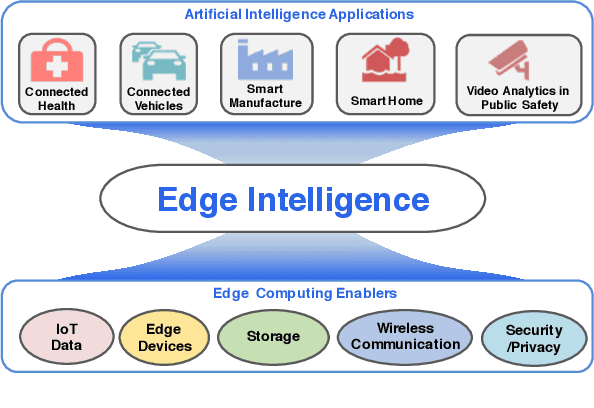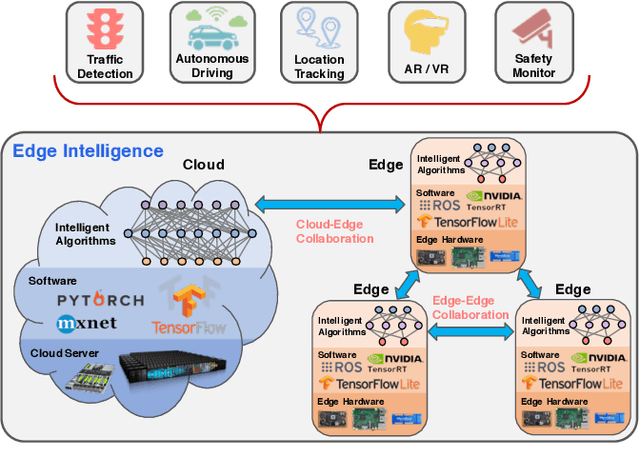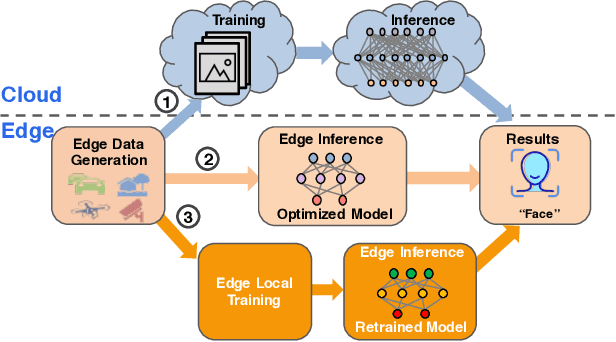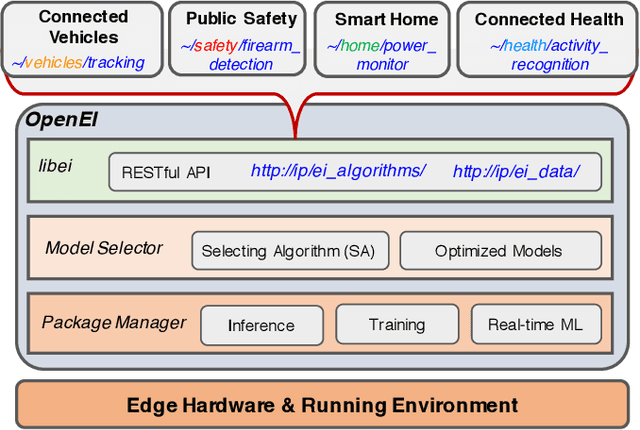Lanyu Xu
Panoptic Perception for Autonomous Driving: A Survey
Aug 27, 2024Abstract:Panoptic perception represents a forefront advancement in autonomous driving technology, unifying multiple perception tasks into a singular, cohesive framework to facilitate a thorough understanding of the vehicle's surroundings. This survey reviews typical panoptic perception models for their unique inputs and architectures and compares them to performance, responsiveness, and resource utilization. It also delves into the prevailing challenges faced in panoptic perception and explores potential trajectories for future research. Our goal is to furnish researchers in autonomous driving with a detailed synopsis of panoptic perception, positioning this survey as a pivotal reference in the ever-evolving landscape of autonomous driving technologies.
OpenEI: An Open Framework for Edge Intelligence
Jun 05, 2019



Abstract:In the last five years, edge computing has attracted tremendous attention from industry and academia due to its promise to reduce latency, save bandwidth, improve availability, and protect data privacy to keep data secure. At the same time, we have witnessed the proliferation of AI algorithms and models which accelerate the successful deployment of intelligence mainly in cloud services. These two trends, combined together, have created a new horizon: Edge Intelligence (EI). The development of EI requires much attention from both the computer systems research community and the AI community to meet these demands. However, existing computing techniques used in the cloud are not applicable to edge computing directly due to the diversity of computing sources and the distribution of data sources. We envision that there missing a framework that can be rapidly deployed on edge and enable edge AI capabilities. To address this challenge, in this paper we first present the definition and a systematic review of EI. Then, we introduce an Open Framework for Edge Intelligence (OpenEI), which is a lightweight software platform to equip edges with intelligent processing and data sharing capability. We analyze four fundamental EI techniques which are used to build OpenEI and identify several open problems based on potential research directions. Finally, four typical application scenarios enabled by OpenEI are presented.
 Add to Chrome
Add to Chrome Add to Firefox
Add to Firefox Add to Edge
Add to Edge